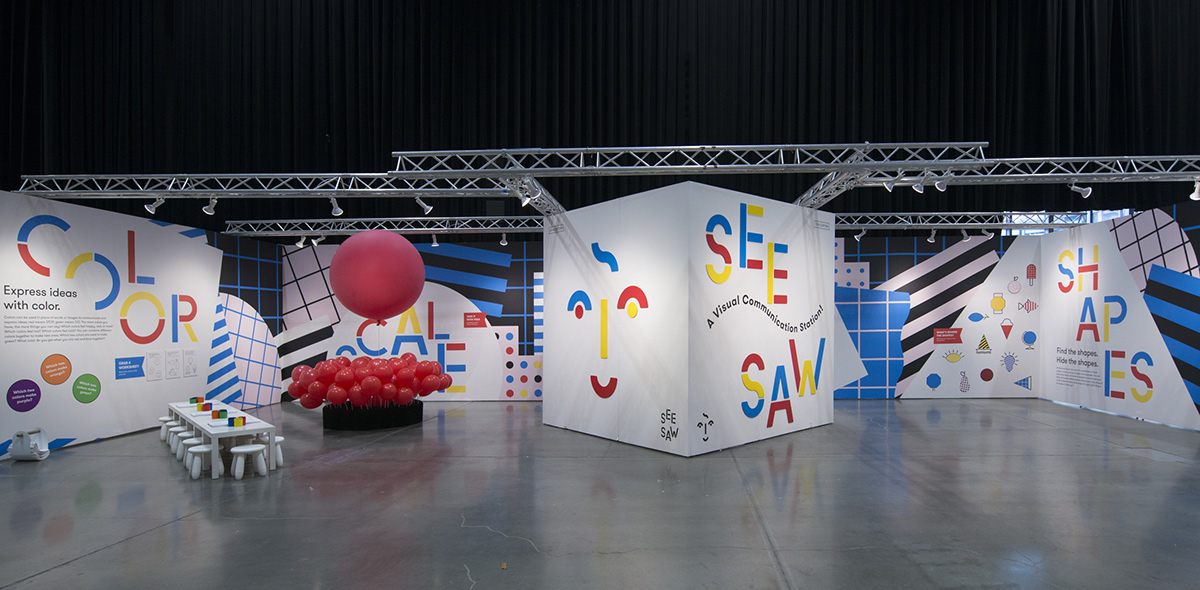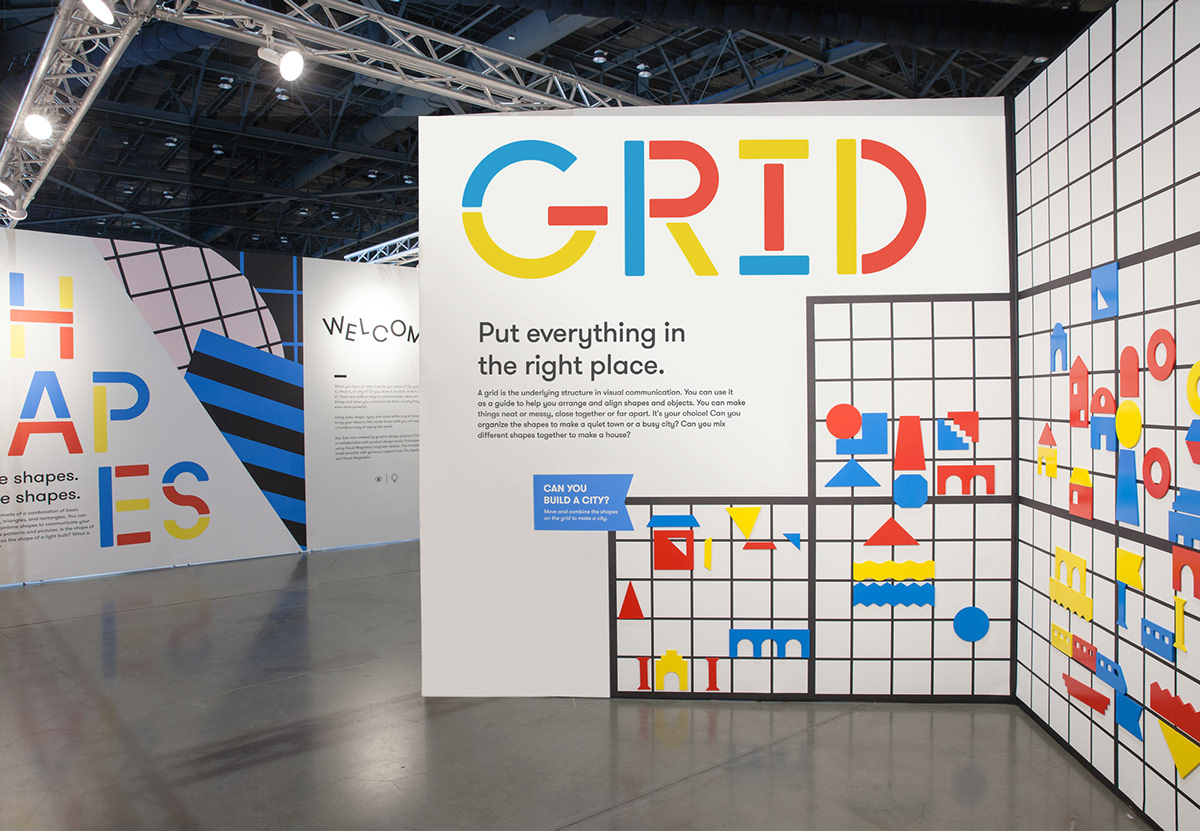

“
The only booth I’ve ever seen at an American art fair that intentionally shifts the commerce–driven dynamic of the art fair model to be inclusive, accessible, and education based. Politics and Play. So smart and inventive.
”
— Branden Koch








OVERVIEW
The Seattle Art Fair, founded in 2015 by Paul Allen, brings together over 100 international art galleries, museums and arts institutions. During the four day fair they have over 18,000 attendees. Galleries showcase work from contemporary and historic artists, including Willem de Kooning, Franz Kline, Yayoi Kusama, Pablo Picasso, Gary Hill, Andy Goldsworthy, Mark Rothko, Dan Webb, Riusuke Fukahori, John Grade, McArthur Binion and Kurt Cobain. For the 2017 Seattle Are Fair our studio devised an immersive space for children and their families to explore and interact with concepts in art and design. The playful exhibition consisted of five activations corresponding to five design tools: scale, color, type, shapes, and the grid.
APPROACH
We were immediately inspired by the materials created by Visual Magnetics, which we had previously worked with on a concept booth for Design Milk at ICFF in New York. The magnetic textiles seamlessly lend themselves to being manipulated and played with. With Visual Magnetics signed on as a partner we began concepting alongside Fruitsuper Design, a design duo inspired by the interactivity of simple playful shapes and design history. We wanted to create a space where children and adults alike could physically play with the tools of visual communication — Shape, Color, Scale, Type and the Grid, so we created a hands–on visual communication station.
The installation was composed of magnetic textiles that could be moved, stacked, or combined to create new pictures, words and ideas. We designed a movable type wall where you could construct new words by breaking apart magnetic shapes that form letters. Through different size balloons, they could take with them, they gained an understanding about scale. They learned how the world is made up of simple shapes by spotting the shapes found in pictures hidden on the walls. And they constructed their own city within a grid to learn the importance of structure. We also designed coloring activity worksheets and a coloring book where children could learn about influential artists and designers who have used these tools in their own work.


